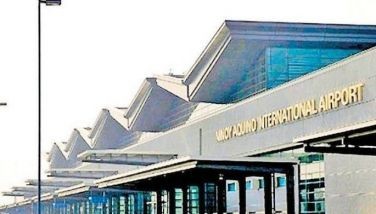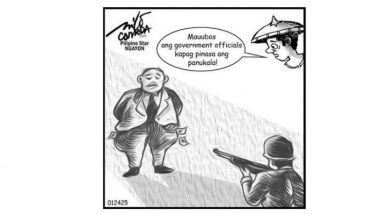DOTC confused on MRT 3 or worse

A number of congressional hearings are slowly but surely establishing what I have long been saying in this column: DOTC is confused on what to do about MRT 3. Or worse, DOTC officials are purposely confusing the public for some ulterior motive we can only imagine.
Sec. Jun Abaya has been saying that buying out the owners of MRT3 to the tune of P54 billion is necessary to start the rehabilitation of the system. He called that process Equity Value Buyout or EVBO which is provided for in the contract.
Two things wrong with what Sec Jun is saying. First of all, the EVBO is a remedy available only to MRTC and would require DOTC to be in breach of agreements and go into default. A default on the part of government would affect the country’s credit rating and should not be resorted to lightly.
MRTC, the private owners, did file such a claim in an arbitration case in Singapore some years ago when DOTC had not been paying stipulated lease payments. But the case had been withdrawn since 2010 when representatives of GFIs joined the MRTC board and assured timely payments, likely because the GFIs get the bulk of the lease payments anyway.
Secondly, the P54 billion DOTC wants would not buy out the original private owners as DOTC officials are publicly claiming. That large sum of money will only redeem MRT bonds now being held by GFIs. In other words, they would just move money from one government pocket to the other, something they are already doing now with the lease payments.
There is a need to point out the difference between equity rights (which belongs to MRTH) and economic rights (that the GFIs hold through the bonds). The original owners sold their economic rights (the rights to the lease payments of government) when they floated their bonds. But they retain their equity or ownership rights over the MRT 3 rails, trains, etc.
When DOTC says the two biggest investors in MRT 3 are Land Bank of the Philippines (LBP) and Development Bank of the Philippines (DBP), they are talking about economic rights. Indeed, the two state banks hold up to 80 percent of MRT bonds and income arising from the bonds, but the banks still do not own the MRT3 system.
DOTC says the government would need $1.172 billion to pay off investors in the EDSA rail system, meaning the holders of the bonds. The amount is equivalent to P53.9 billion computed at P46 to the dollar.
Sec. Abaya placed the value of the two banks’ exposure at $619.1 million, plus a “return” of $312 million for a total of $931.1 million. He valued “non-DBP/LBP investments” at $95.8 million. His funding request also included $143 million for taxes and $2 million for legal fees.
But MRTH officials told legislators that the government would need at least P90 billion for all MRT3 investors. Also, not a centavo of the P54 billion that DOTC said would buy out the original owners would go to the rehabilitation of the system.
DOTC officials also could not explain why the maintenance contract they awarded to PH Trams and to APT Global was only providing labor when the contract covers spare parts plus labor. DOTC officials also could not explain why DOTC had to buy the spare parts and materials that were supposed to be supplied by PH Trams to APT Global as provided for in their maintenance contracts.
Legislators, senators and congressmen, have urged Sec. Abaya to talk things over with MRTH officials so things could be clarified. At least three meetings were set and confirmed by Sec Jun but he cancelled out at the last minute for some excuse or another. I suspect Sec. Jun doesn’t know what to say and DOTC’s strategy at this point is to keep things murky so they could continue to play the blame game.
Are things hopeless for commuters using the MRT 3? If P-Noy allows DOTC officials to go their merry way, it is hopeless. But the hearings in both the Senate and the House suggest there could be some glimmer of hope.
MRTH II, the 100 percent owner of MRTC, told legislators they are willing to do the upgrade and capacity expansion, or even a buy out, if only DOTC would talk to them. MRTH II also gave a new proposal last week that wouldl fully rehabilitate the rail system and all 73 rail cars for under $100M or about P4.5 billion, totally private sector financed. MRT Holdings II chairman Robert John L. Sobrepena confirmed the offer to Sec Jun in a letter dated Nov. 11, 2014.
DOTC could at best only rehabilitate 25 cars for P2.5 billion under chop chop contracts. Anyway, P4.5 billion to let the private sector owners rehabilitate MRT 3 is a long way from the P54 billion DOTC is asking for, which does not even include rehabilitation.
The offer of the private owners of MRT 3 to rehabilitate the system is interesting. It entails no government funds and the fare would be no higher than what is being charged by the buses running at grade level. I heard they are even willing to take market risk and eliminate fare subsidy by government, if they are given bus fare rates. The private owners want to operate the system this time because as they pointed out, government has proven itself incompetent to properly operate MRT 3.
The most important part of the proposal is to reinstate the single point of responsibility principle. MRTC wants to undertake the maintenance, rehabilitation, and upgrading of the MRT-3 System under one contract managed by the former maintenance provider ---Sumitomo Corporation.
MRTC is promising that “the maintenance would not just include corrective measures, but also preventive maintenance and asset management plan as recommended by the MTR Hong Kong in its preliminary audit report. The rehabilitation would include the immediate procurement of spare parts, replacement of broken and deteriorated rail tracks, and other works necessary to rehabilitate the MRT-3 system as recommended by MTR Hong Kong.”
Without prejudice to the pending arbitration proceedings brought about by DOTC’s decision to procure new trains from China, MRTC agreed to ensure that the commissioning and eventual operations of the 48 new LRVs would be seamless. But final acceptance of the Chinese LRVs also depends on compatibility with the technical specifications of the MRT-3 system.
MRTH is putting together a consortium that would finance and own the MRT3 operation. Right now, it is almost a certainty that Sumitomo would be there and possibly MPIC or Metro Pacific. Sumitomo designed, built and maintained the MRT-3 until 2012 when the DOTC suddenly tapped the services of controversial firms that didn’t have a track record, but are supposed to be connected to relatives of a DOTC official.
Some congressmen expressed approval of the private sector offer. Valenzuela City Rep. Magtanggol Gunigundo told DOTC officials during the hearing that “the commuters are more concerned with efficient transportation service. We want those long queues to disappear. We want those restrooms to be functioning. We want the standards to be upgraded to be comparable to train systems in Hong Kong and Singapore.” The congressman also said DOTC has yet to roll out a complete plan to upgrade the facilities of MRT 3.
Abakada party-list Rep. Jonathan de la Cruz said the cost of the MRTH-II proposal is much lower than the what DOTC calls EVBO, which would not address the safety concerns of the riding public, but only profit the DBP and LBP.
Now that a viable way to save the MRT 3 has been set on the table, I see no reason for DOTC to continue stonewalling. Sec. Jun must sit down with MRTH officials and discuss things rather than insist that DOTC must do what it has proven incapable of doing all these years – run MRT 3 properly.
If there are objectionable provisions in the proposed agreement, Sec. Jun must tell us now rather than just avoid giving an explanation for DOTC’s lack of action. We must not wait for a tragic accident to happen.
I realize too that the original MRT 3 contract seems problematic from the start. FVR did seem to have agreed to a very lopsided and problematic contract. Now is a good opportunity to correct objectionable provisions. There has to be room for give and take but they have to sit down and talk for anything to happen.
The other good reason for talking is the possibility that it would avoid an even longer legal conflict. That would only delay everything and our commuters would continue to suffer and risk their lives daily.
Boo Chanco’s e-mail address is[email protected]. Follow him on Twitter @boochanco
- Latest
- Trending




























